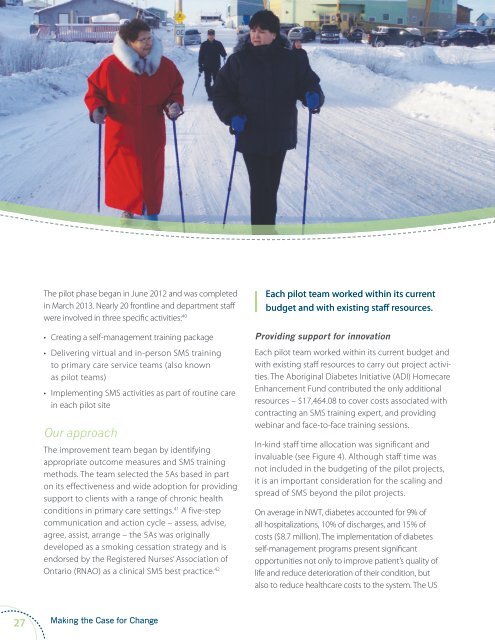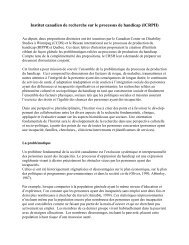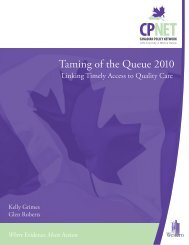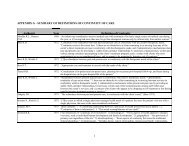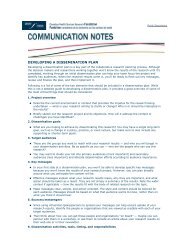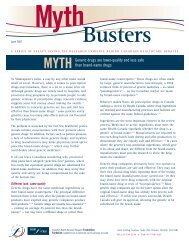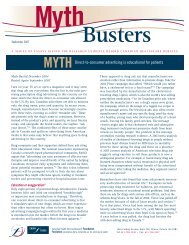Full Report
Full Report
Full Report
Create successful ePaper yourself
Turn your PDF publications into a flip-book with our unique Google optimized e-Paper software.
The pilot phase began in June 2012 and was completed<br />
in March 2013. Nearly 20 frontline and department staff<br />
were involved in three specific activities: 40<br />
• Creating a self-management training package<br />
• Delivering virtual and in-person SMS training<br />
to primary care service teams (also known<br />
as pilot teams)<br />
• Implementing SMS activities as part of routine care<br />
in each pilot site<br />
Our approach<br />
The improvement team began by identifying<br />
appropriate outcome measures and SMS training<br />
methods. The team selected the 5As based in part<br />
on its effectiveness and wide adoption for providing<br />
support to clients with a range of chronic health<br />
conditions in primary care settings. 41 A five-step<br />
communication and action cycle – assess, advise,<br />
agree, assist, arrange – the 5As was originally<br />
developed as a smoking cessation strategy and is<br />
endorsed by the Registered Nurses’ Association of<br />
Ontario (RNAO) as a clinical SMS best practice. 42<br />
Each pilot team worked within its current<br />
budget and with existing staff resources.<br />
Providing support for innovation<br />
Each pilot team worked within its current budget and<br />
with existing staff resources to carry out project activities.<br />
The Aboriginal Diabetes Initiative (ADI) Homecare<br />
Enhancement Fund contributed the only additional<br />
resources – $17,464.08 to cover costs associated with<br />
contracting an SMS training expert, and providing<br />
webinar and face-to-face training sessions.<br />
In-kind staff time allocation was significant and<br />
invaluable (see Figure 4). Although staff time was<br />
not included in the budgeting of the pilot projects,<br />
it is an important consideration for the scaling and<br />
spread of SMS beyond the pilot projects.<br />
On average in NWT, diabetes accounted for 9% of<br />
all hospitalizations, 10% of discharges, and 15% of<br />
costs ($8.7 million). The implementation of diabetes<br />
self-management programs present significant<br />
opportunities not only to improve patient’s quality of<br />
life and reduce deterioration of their condition, but<br />
also to reduce healthcare costs to the system. The US<br />
27<br />
Making the Case for Change


